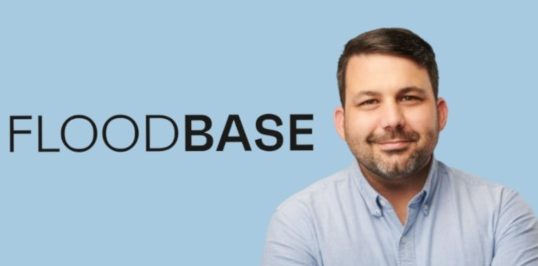With floods on the rise due to climate change, re/insurance solutions covering this type of peril have become more important now than ever, Peter Lacovara, Head of Commercial at Floodbase, highlighted in a recent interview with Reinsurance News.
 With flood having one of the largest protection gaps compared to other perils, tools such as parametric insurance are a great complement to traditional solutions to help narrow it down, Lacovara noted.
With flood having one of the largest protection gaps compared to other perils, tools such as parametric insurance are a great complement to traditional solutions to help narrow it down, Lacovara noted.
“I think that it’s important that people recognise how much floods have changed in the past few years,” said Lacovara. “For example, in 2022 there were 18 weather related disasters that all exceeded a billion dollars in the US. It used to be one or two events like that per year, but 18 is crazy. And it’s the eighth or tenth consecutive year where there have been ten or more billion dollar events like that.
“The fact is these things really are getting worse, the population is growing and flooding is becoming more extreme. Historically, floods have been catalogued as non-peak catastrophe risks but that’s no longer the case.”
Losses caused by flood are becoming bigger, this along with their increased frequency and the peril’s large protection gap -over the past decade, 83% of global economic losses from flooding were uninsured, according to the Swiss Re Institute – have made products such as parametric re/insurance more attractive, Lacovara pointed out.
“The protection gap for flood insurance is one of, if not the largest protection gap among all perils. There certainly are others that have a slight difference, higher maybe by 15% to 20%, but the total value at risk relative to flood is by far greater than any other peril,” he explained.
“The protection gap is a big part of what Floodbase focuses on, and parametric is very effective at closing it. The question really comes down to, why does the protection gap exist? I think that there are a variety of different reasons for it, and I would say that, both the developed and developing world face different challenges.
“In the developed world, probably the biggest challenge that contributes to the protection gap is the fact that indemnity insurance covers a very specific type of loss in the property space. It covers physical damage and associated business interruption, but a lot of economic value is not directly related to physical damage.
“So, as all flood insurance is done on an indemnity basis, and it’s really tied to physical damage, whereas parametric is very good at insuring things that are not physical damage, which makes it a fantastic supplement to indemnity insurance.”
“The challenges in the developing world involve data,” Lacovara added. “It is very difficult to offer insurance in these parts of the world for things like flood because data is needed to create high quality models that may not even exist; you need the ability to deliver claims efficiently and effectively and then adjust those claims; you need the data to underwrite, which may not be readily available.
“So, I would say, the greatest driver of the protection gap is the difficulty of offering insurance in the developing world where you have an explosion of economic value and economic output, but insurance hasn’t been able to keep up with that from a data perspective, and parametric really solves that data problem.”
While trying to help closing the protection gap around the world, Floodbase also aims to provide the lowest basis risk policy possible. Lacovara said: “Basis risk is a very important part of the equation for us. We, and the partners we work with, the insurance carriers and brokers that we work with, our goal is always to provide the lowest basis risk policy that we possibly can.
“The way that we directly assess that is when we’re working with a carrier or broker on structuring and pricing a policy, we use any data that we can find to look at historical events. In some sense, we can just look at the satellite record and see how it flooded, that’s one of the advantages that we bring to the table.”
“But basis risk also goes both ways,” he concluded. “There’s such a thing as positive basis risk, where you’re paying for insurance that you don’t really need. And that’s another focus that we have to look at as well. We have to make sure that when we’re triggered for a flood event, we want to be sure that there is some kind of economic loss associated with that.
“We want to pay for the events that matter, and we don’t want to pay out for the events that don’t matter because that means that the policy buyer is paying for insurance that they’re not using.”


